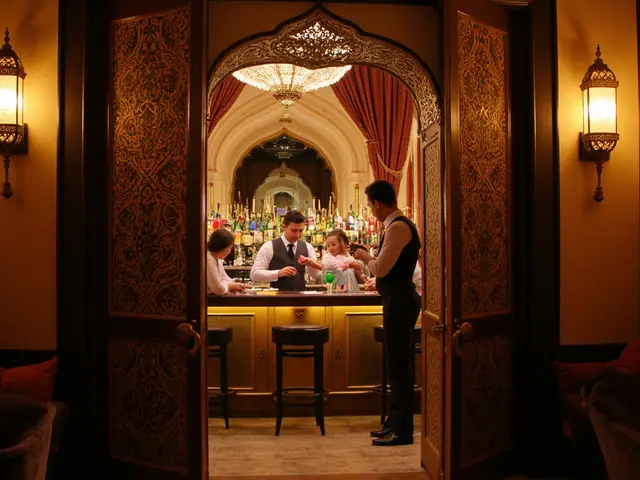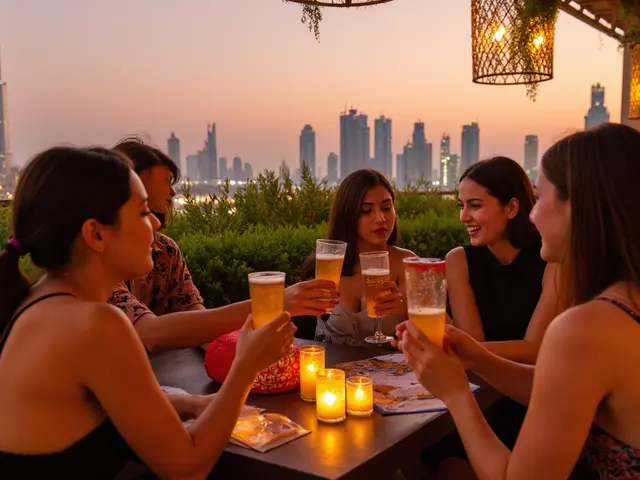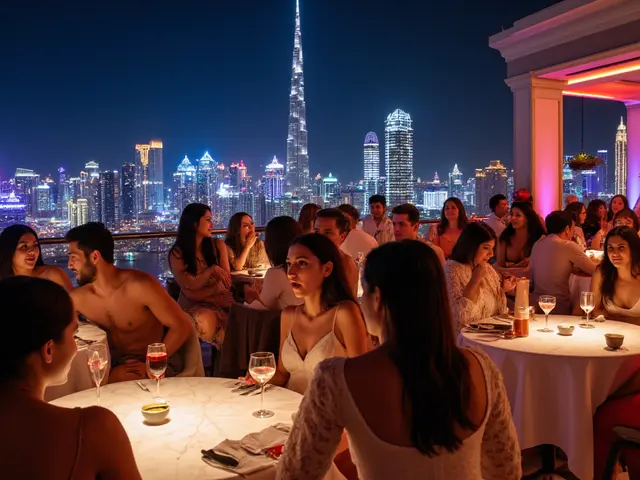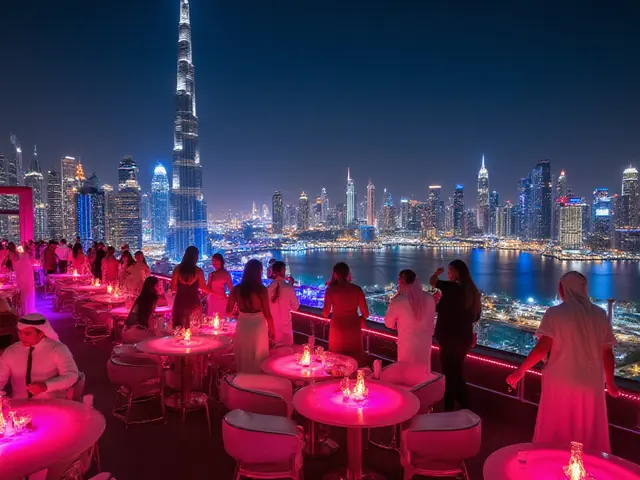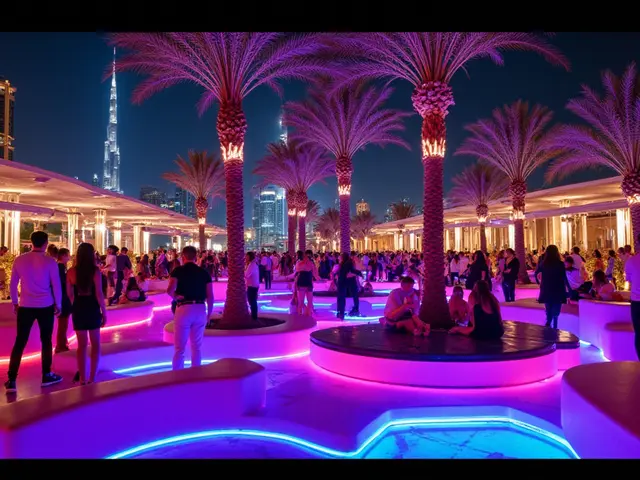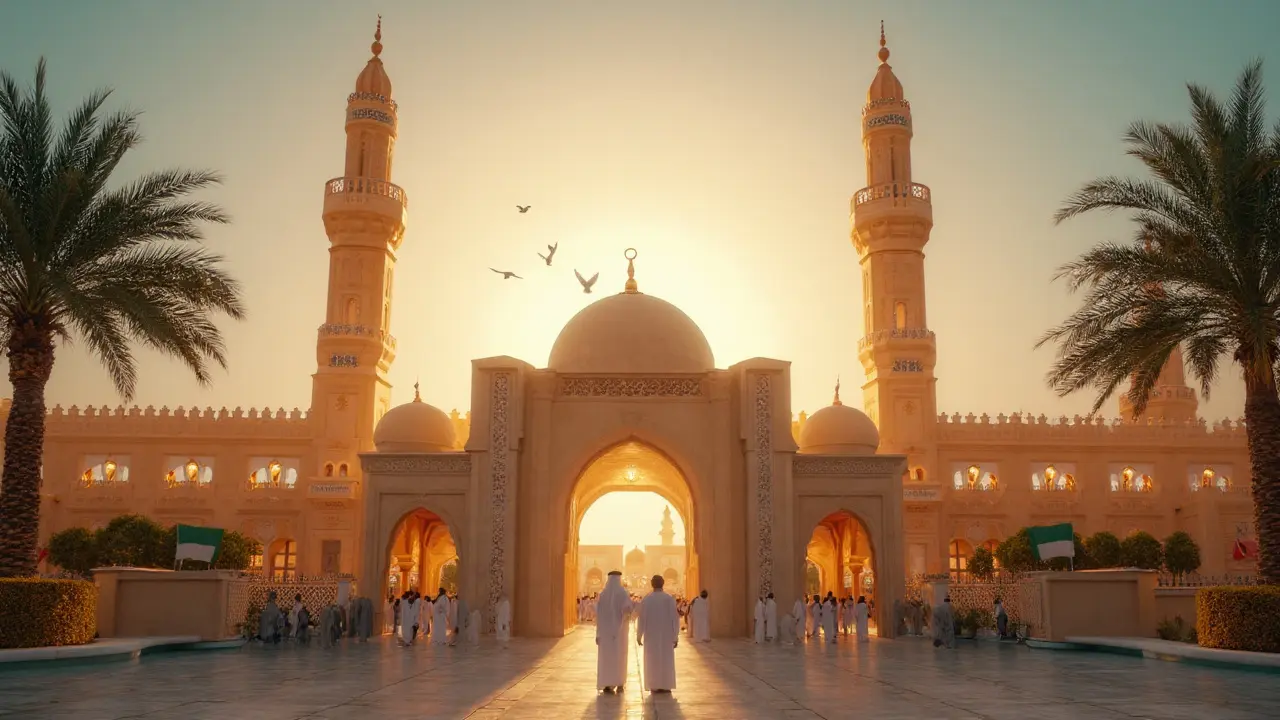
You showed up for art, not just a pretty facade. This is where Dubai’s most welcoming mosque teaches you how to see: proportion, geometry, light, and the quiet precision of Islamic design. If you want a quick win-what’s special here, how to visit without guesswork, and how to photograph it well-stick with me. No fluff. Just the details that help you walk in with confidence and walk out actually seeing more than you did before.
Key Points
- The Jumeirah Mosque is Dubai’s most accessible mosque for non‑Muslim visitors, known for its traditional Fatimid-inspired design and guided cultural tours run by the Sheikh Mohammed Centre for Cultural Understanding (SMCCU).
- The artistry isn’t just decoration; it’s a system-geometry, calligraphy, and light working together to guide your eye from the courtyard to the mihrab (prayer niche).
- Tours typically run most days (often mornings; some seasons add an afternoon slot), last about 75 minutes, and welcome respectful photography.
- Dress modestly (shoulders and knees covered; headscarf for women). Shoes come off before entering the prayer hall.
- Best time for photos: golden hour outside; mid-morning for interior detail during guided tours.
Direct Answer
“Exploring the artistry” at Jumeirah Mosque means learning to read Islamic architecture the way you’d read a score: symmetry sets rhythm, calligraphy carries meaning, and light times the whole performance. On site, you’ll see clean cream stone, twin minarets, and a central dome that anchors the composition. Inside, you’ll find geometry, Qur’anic calligraphy, and pattern that avoids figurative imagery but still feels alive. You can visit on a guided SMCCU tour (welcoming, photo-friendly, interactive) where hosts explain design, etiquette, and the why behind it all. If you only do one cultural experience in Dubai, this one lets you stand inside the art and ask your questions out loud.

Comprehensive Guide to Jumeirah Mosque
Let’s set the stage. Jumeirah Mosque opened in the late 1970s, built in traditional Fatimid-inspired style with contemporary engineering. That blend is the point: Dubai honoring heritage while growing fast. The mosque became famous not just for its look but for its open-door tours run by SMCCU-an organization created to make cultural conversations easy and judgment-free. You’re invited to turn curiosity into clarity.
So what exactly are you looking at? From the street, notice the two slender minarets framing the dome. That trio-the dome plus the minarets-establishes the skyline profile. The facade is not loud; it’s refined. Cream-colored stone and repeating arches give a calm, harmonious face. At dusk, the mosque glows-shadows deepen the patterns so you can read the relief like a book.
Inside, everything flows toward the qibla wall (the direction of prayer). You’ll find the mihrab, a niche that subtly amplifies the imam’s voice and signals orientation. The minbar, a small raised pulpit, sits to the side for Friday sermons. Overhead, geometric rosettes and rhythmic banding keep your gaze moving without overwhelming you. Calligraphy panels carry verses-art and theology woven into one surface. No figurative images, by design; Islamic sacred spaces focus on unity and abstraction.
Want a simple way to “read” the design?
- Start wide: Step back outside and frame the full composition-ground line, dome, minarets. Ask: what’s the dominant rhythm?
- Move medium: At the entrance, track repeating arches. How does shadow change the pattern as the sun shifts?
- Go close: Inside, get to eye level with the calligraphy and follow a line fully-notice letter thickness, spacing, and the way it sits on the architecture.
- Finish above: Look up to the dome ring. Count the segments. Symmetry is the quiet drumbeat here.
Materials and craft matter too. You’ll see stone cladding with crisp carving. The approach is precise-edges are clean, patterns align, joints are disciplined. That discipline reads as calm. Light is a co-artist: daylight sets up the patterns; soft interior lighting keeps them legible without glare.
Color palette? Cream, soft beige, warm gold. It holds mood like a neutral gallery wall, so the patterns feel vivid without bright pigments. Compare that to Ottoman-influenced mosques (think turquoise tiles and floral arabesques) and you’ll get how Jumeirah’s restraint is its statement.
Common details you’ll spot on tour:
- Arches: Look for pointed and slightly “keel” shaped profiles-hallmarks of Egyptian Fatimid influence.
- Muqarnas hints: Honeycomb-like transitions appear in selected junctions, breaking light into texture.
- Calligraphy: Qur’anic verses rendered in classical scripts, placed where your eye naturally rests.
- Mihrab and Minbar: The focal niche and the pulpit-form follows function.
- Prayer carpet: Lines subtly mark rows, keeping order without signage.
Photography pointers that actually help:
- Golden hour outside: The cream stone takes on warmth; shadows wrap the relief. It’s the easiest win.
- Courtyard reflections after a light wash (rare in Dubai but magical if it happens): Look for shallow puddles for mirror shots.
- Interior symmetry: Plant your feet on the centerline toward the mihrab; align the dome apex dead-center. Use gridlines.
- Lens choice: 24-35mm on full-frame for exterior framing without heavy distortion; 16-20mm inside if you’re careful with verticals.
- Respect first: Ask before photographing people; silence your shutter. If a worshipper walks into frame, lower the camera and wait.
Etiquette isn’t scary. Cover shoulders and knees; women bring a headscarf (loaners often available at the tour). Shoes off in the prayer hall-easy. Keep voices low, phones on silent, and hold questions until the guide pauses. If you’re not sure, ask-guides are there to help, not to police you.
Good to know on logistics. Tours are led by SMCCU, the city’s reference point for cultural experiences. As of 2025, expect a morning tour most days (Saturday to Thursday), with seasonal afternoon tours added during cooler months. Friday is reserved for communal prayers, so tours usually do not run then. Registration is simple and often done on-site 15-30 minutes before start, but arriving early is smart in high season (November-March). Check the day’s schedule before you set out.
Families do well here. The tone is welcoming, questions from kids are encouraged, and the tour pace suits curious teens as much as architecture nerds. Accessibility is decent; surfaces are mostly flat, and staff can assist where needed. Water is your friend-Dubai heat doesn’t play-and modest, breathable clothing does double duty for comfort and respect.
Getting there is straightforward. The mosque sits in the Jumeirah neighborhood near the coast. Ride-hailing or taxi is the cleanest option. If you prefer public transport, buses along the beachfront corridor drop you a short walk away; the nearest Metro stations are inland, so you’ll still need a short cab hop. Plan 15 minutes of buffer time-parking and crossing busy roads can eat more minutes than you think.
Why this mosque and not another? Because of the conversation. The tour format-“Open Doors, Open Minds”-invites questions you might not feel comfortable asking elsewhere: why no figurative art, how prayer times work, what the calligraphy says, what the imam actually does. You don’t just look at architecture; you understand why it is the way it is.
Pricing, Booking, Etiquette, and FAQs
Here’s a fast, practical block you can save. These details change with seasons and events, so treat this as a working guide and confirm the day you go.
| Item | What to Expect (2025) | Tips |
|---|---|---|
| Tour Operator | Sheikh Mohammed Centre for Cultural Understanding (SMCCU) | City’s official culture program; hosts are trained and welcoming. |
| Tour Days | Typically Sat-Thu; Friday tours generally not offered | Religious schedule takes priority-always recheck same-day. |
| Tour Times | Morning (often 10:00). Afternoon slots added in cooler seasons | Arrive 15-30 minutes early for registration and dress check. |
| Duration | About 75 minutes including Q&A | Plan a 2-hour block with transit and photos. |
| Fees | Adults usually AED 35-50; children often free or reduced | Bring card or small cash; confirm current rate with SMCCU. |
| Photography | Encouraged with respect; ask before photographing people | Turn off shutter sounds; no tripods in busy areas. |
| Dress Code | Modest: shoulders/knees covered; headscarf for women | Loaner abayas/scarves often available; dress light for heat. |
| Language | Tours conducted in English | Simple, clear explanations; guides welcome any questions. |
Booking is simple. The common flow: check the day’s tour time, arrive early, register with the host, sort dress code, join the group. Some seasons allow online pre-registration; same-day walk-ins are typical but not guaranteed if a group fills up or a private event is running.
Etiquette checklist you can skim at the gate:
- Clothing: shoulders and knees covered; headscarf for women; no beachwear.
- Footwear: remove before entering the prayer hall; use shelves provided.
- Behavior: calm voice, no eating in the prayer hall, phone on silent.
- Photos: people first-ask; sacred moments-pause the camera.
- Respect the space: avoid stepping over people’s prayer spots; follow guide’s routes.
Safety notes: The site is well staffed, surfaces are even, and shaded waiting areas help in summer. Hydrate beforehand, and don’t underestimate midday sun. If you’re fasting curiosity and questions, you’ll be fed-guides usually offer tea and light snacks to support the Q&A vibe.
Choosing between Jumeirah Mosque and another Dubai mosque? Here’s a quick comparison to help you plan if time is tight:
| Feature | Jumeirah Mosque | Al Farooq Omar Bin Al Khattab (Blue Mosque), Dubai |
|---|---|---|
| Style | Fatimid-inspired, cream stone, restrained ornament | Ottoman-inspired, rich blue interiors, larger scale |
| Visitor Access | Structured SMCCU guided tours for non‑Muslims | Visitor-friendly outside prayer times; tours vary by season |
| Best For | Guided cultural dialogue + photo-friendly intro | Self-paced exploration of ornate interiors |
| Photo Tips | Golden-hour exteriors; symmetry inside during tours | Wide-angle for domes; check staff guidance on photos |
| If You Have 90 Minutes | Do the guided tour-questions welcome | Quick look outside prayer times; confirm entry rules |
FAQs you’re likely thinking about:
- Can non‑Muslims enter? Yes-join the SMCCU-guided visit. That’s the whole idea.
- Are kids welcome? Absolutely. It’s designed to be family-friendly.
- What if I’m underdressed? Hosts usually provide loaner garments; arrive early to sort it calmly.
- Is Friday possible? Usually not-Friday is for prayers. Check another day.
- Can I pray there if I’m Muslim? Yes, during prayer times. Be mindful of tour flow if you’re overlapping.
- Wheelchair access? Generally accessible. Staff can help at thresholds; let them know when you arrive.
- What about Ramadan? Tours may adjust. Expect extra sensitivity around prayer times and fasting hours.
Next steps by persona:
- Photo-led traveler: Aim for the first morning tour. Scout the exterior 20 minutes before for angles, then shoot interiors during Q&A.
- Family with kids: Pack light layers, water, and one question each for the guide-kids light up when they get answers.
- Architecture student: Bring a small notebook. Sketch the dome plan and arch profiles on site; measure symmetry by footsteps.
- Culture-first visitor: Spend an extra 15 minutes after the tour reading the calligraphy bands from one end to the other; ask what verses were chosen and why.
- Short on time: If the guided slot doesn’t fit, enjoy the exterior during golden hour and plan the tour another day-you’ll get more value with the live explanation.
One last viewing trick: stand just inside the threshold and look back out. The darkness of the interior frames the bright courtyard like a picture window. That contrast-shadow to light-is the mosque teaching you how to see. Once you’ve noticed it here, you’ll spot the same move in mosques across the region.
If you want the cleanest experience: check the day’s schedule with SMCCU, dress modestly, arrive early, and plan questions. The artistry will meet you halfway; the rest is just paying attention.

